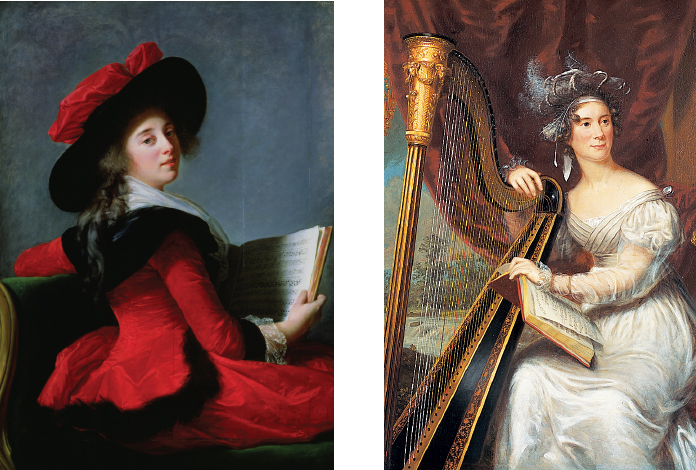1 | The Sonata
The word sonata has multiple meanings. We already know it from the term sonata form, the scheme employed in the first movements of symphonies, but the word goes back to before the Classical period and simply meant a piece for a small number of instruments or a single one. (In Italian, sonata means “sounded,” that is, played.) In the Classical period the term usually referred to compositions for one or two instruments only.
Sonatas were not designed for concerts, which in any case were still rare at this time, but for private performances, often by amateurs. The symphony is a public genre, the sonata a domestic one — and increasingly the domestic clientele was made up of women (see the next page). Although professional female instrumentalists were still rare, more and more women played music in the home. Given their amateur audience, some (not all!) sonatas are easy to play and may be limited in expressive range.

Piano sonatas were composed for solo piano, the favorite new instrument of the time, and violin sonatas were composed for violin and piano. (The early piano was called the fortepiano; see page 187.) In Classical sonatas with violin, the piano is not a mere accompaniment but an equal partner; it holds its own in such combinations in a way that the earlier harpsichord usually did not.
Compare the three-
In Chapter 15 we will return to the piano sonata, examining a movement by Beethoven.
| MOVEMENTS OF THE SONATA | |||
| OPENING MOVEMENT | SLOW MOVEMENT | CLOSING MOVEMENT | |
| Tempo | Fast/moderate | Slow/very slow | Fast/very fast |
| Form | Sonata form | Sonata form, variations, rondo form, or other | Often rondo form |